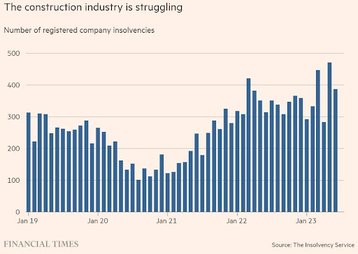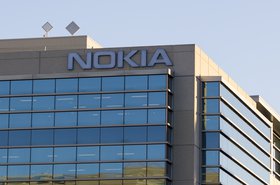The data center industry is currently experiencing a significant surge in demand, having grown between seven to tenfold in the previous five years.
In the US alone, the total MW capacity under construction has grown from under 500MW in 2020 to a staggering 3,500 – 5,000MW today, according to estimates from CBRE, Royal Bank of Canada, and DigitalBridge.
This seven-to-ten-times surge shows no signs of abatement and presents both opportunities and challenges. While the increase in demand is a positive development, it is simultaneously alarming due to a massive skill shortage in the market. The current workforce and skill levels are not adequate to meet the burgeoning demand, leading to a significant resource gap.
Regional sectors are facing major challenges with project resourcing and supply chain, due to materials and logistics costs, market fluctuations, and Brexit/EU immigration regulations on the movement of labour, impacting professional project staff and work permits.
Geopolitical tensions in Ukraine and the Middle East, as well as China-US relations have added to the uncertainty. Whilst the UK market for project resources is stable, major hub centers such as Germany continue to struggle for appropriate resources due to immigration laws.
With material costs rising as much as 60 percent and labor costs up by an average of 30 percent, combined with lower resource and staff availability, the industry must move to operational models that offer friendly, fast and flexible customer outcomes. This can only be done by correct project resourcing and starting to leverage the new project management technologies that are becoming available in the market.
Insufficient training programs
In the UK, the traditional path to construction knowledge was a three-to-six-year apprenticeship for school leavers. The entry-level apprenticeship uptake across England since 2014-15 has, however, witnessed a 72 percent decrease, according to an IPPR study.
These figures should make all construction companies and stakeholders sit up and take notice when looked at in conjunction with the current labor shortages and forecasted industry growth.
Young people entering the construction industry and working their way to senior positions at project and company level, along with university graduates, is how we maintain the breadth of industry knowledge needed to sustain effective project success.
As the number of people joining the industry fails to keep pace with the resources that the construction industry loses to other sectors and retirement, we will continue to struggle to deliver projects on time, on budget, and without defects.
Because of the strain on finding the skills needed, a common condition in the industry is the ‘Peter Principle.’ This is where people are good at what they do, so they are promoted too quickly, without the necessary training and support, to a level of incompetence. The result is that the business sets them up to fail. This has become all too prevalent in the rush to secure project resource.
This lack of properly trained resource means that new entrants into the industry are not being adequately prepared to handle the increasing complexity of demands, with ‘burn-out’ and low morale being a constant project issue. Thus, the lack of sufficient skills is already a concern and is expected to become more severe with the ongoing requirement for AI-capable data centers.
Supply chain vulnerabilities
The soaring demand, paired with a skills shortage, has stretched an inadequately skilled supply chain. The strain on suppliers, especially smaller ones, is putting them under considerable threat of bankruptcy, which could destabilize the supply chain ecosystem and impact the industry's ability to meet demand. The past 12 months have seen almost 4,500 small operators in the industry become insolvent. In an environment of high interest rates, there is broad-based concern that this number may rise in 2024–2025.
As we see the number of tier 2 and 3 contractors fail, this will lead to either a loss of the knowledge for the industry, or those skilled people being absorbed by either other contractors or program management and construction management consultancies that supply skilled people to general contractors and customer organizations alike. This comes with its own subtle dichotomy for the industry when creating project teams, as both business operating models are sometimes mutually exclusive.
For example, a contractor may wish to keep their project staff lean, with clear lines of responsibilities and accountabilities that are driven through company and personal goals and objectives, yet this may not always be the case with third-party-supplied resource. This can lead to a disconnect, with a project office developing a ‘them and us’ paradigm.
Growth paradox and efficient scaling
A paradox in the industry concerns the rapid expansion of data center developers' portfolios, which have grown by multiples of five or ten. The question arises as to whether their teams should expand commensurately.
Here we argue that simply adding more people to these growing projects may, in fact, slow them down. Evidence suggests that scaling up teams, especially in the later stages of a project, can lead to greater inefficiencies and miscommunication, hindering progress.
This has been experienced by general contractors (GC), where projects are under pressure for reasons of labor shortages, asset and material lead times, inefficient project management practices, and optimism bias in planning. In turn, these lead to customer and end-user frustration and pressure to have a finished product, so the GC leadership has ‘flooded’ the project to help ‘get it over the line.’
There is plenty of anecdotal evidence in the industry where GCs have taken on data center projects in EU regions and have not fully understood the local resourcing requirements and supply chain logistics. In addition, they have incorrectly assumed that a UK labor force will be as effective as normal, when they are on rotational-based attendance in a regional project office.
Instead, the solution may lie in developing smaller, fully supported, highly competent, highly motivated, and well-compensated teams capable of delivering increased outputs to realize your competitive potential – a theme also adopted by the World Quality Week in 2023.
To meet the strong imperative for quick time-to-market in the industry within the context of an acute skills shortage, we argue that the solution lies in focusing on training people and empowering them with the capabilities of AI. Streamlined, lean teams with mature AI tools have a better chance of efficiently delivering on larger projects.
Investment in training is crucial across the industry, particularly innovative approaches that enable smaller teams to achieve more thanks to AI assistance and other technological advancements. These strategies aim to ensure that fewer people can deliver greater results, thereby addressing the skills gap and meeting the high demand.
Theoretical Background
Management theory supports our recommendation that leaner teams are in fact better suited to lead large, complex projects and portfolios. Fred Brooks' 'Mythical Man-Month' addresses the issue of: Does a larger team complete a project faster? In that book, he proposes Brooks' Law, which states: "Adding manpower to a late project makes it later."
The underlying rationale is that as more people are added to a project, the complexity and communication overhead increases quadratically. New team members require time to become productive (a ramp-up period), and the increased communication channels can bog down progress, leading to further delays rather than speeding up the project.
Mathematically, if n is the number of team members, the number of communication channels is n(n-1)/2, which grows in a quadratic fashion as n increases. Milvio DiBartolomeo provides a compelling graphical illustration of this principle in Figure 2.
DiBartolomeo’s image presents a visual representation of how communication and complexity grow with the increase in team size, especially within the context of organizational structures like portfolio, program, and project executive teams and boards. These teams, which are crucial for making informed decisions, are most effective when they are composed of members who have a clear and direct connection to the business, such as representatives of the project itself, users, suppliers, and those with assurance responsibilities.
In essence, to maintain effective organizational governance, it's critical to understand that expanding the size of these teams, even by one person, can complicate the decision-making process and the management of information. The delineation between decision-making authority and stakeholder engagement becomes muddled when the group size exceeds the range of three to seven individuals. Thus, counter-intuitively, adding more people to a large complex project exposes it to greater risk. Formally,
T ∝ P 2
Time to complete a project (T) is proportional to (∝) the square of the Number of People (P) in the team.
Leaner and highly motivated teams, equipped with innovative AI tools, are better off when dealing with larger scales than big teams. High-performance teams adopt AI to make themselves even more productive.
In closing, there is a critical balance between team size and project efficiency within the data center industry's current landscape of explosive demand and skilled labor shortage. Lean, agile teams empowered with AI and advanced project management tools outperform larger groups by mitigating the risk of communication overload and decision-making complexity.
The industry must pivot towards nurturing a skilled workforce and leveraging technological advances to sustain growth and meet the fast-evolving market needs. Through strategic team composition and a focus on training and technological empowerment, the sector can navigate these challenges and continue to deliver on its ambitious objectives.







